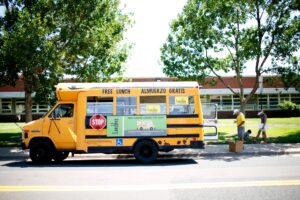 Summer is coming up and, as you may know, this can be the hungriest time of year for kids who rely on school meals. And while summer meals programs are designed to help connect kids with the nutrition they need when schools are closed, they’ve historically reached only a fraction of eligible children – especially in rural communities. In fact, an estimated 6 out of 7 kids who may have needed summer meals have historically missed out.
Summer is coming up and, as you may know, this can be the hungriest time of year for kids who rely on school meals. And while summer meals programs are designed to help connect kids with the nutrition they need when schools are closed, they’ve historically reached only a fraction of eligible children – especially in rural communities. In fact, an estimated 6 out of 7 kids who may have needed summer meals have historically missed out.
Traditional Summer Meal Programs Are Not Reaching Most Kids in Rural Communities
For those living in rural communities, there are a number of barriers standing in the way of kids receiving these nutritious summer meals under traditional congregate models that require meals to be consumed on-site in a group setting. Some of these barriers include lack of transportation, high fuel costs associated with commuting to meal sites every day, conflicting work schedules of caregivers, and extreme weather, such as the Texas heat which can be unsafe for outdoor congregate meal sites.
Non-Congregate Summer Meals are a Game Changer
We are excited that recent federal policy changes have made non-congregate meals an option for rural communities. Rural non-congregate works alongside traditional summer meal programs to provide a comprehensive solution to the long-standing challenge of summer hunger.
This Summer, Even More Rural Communities Will Be Eligible
These changes allow local organizations the flexibility to design their summer meal programs to best fit the needs of their communities, making it more convenient for families to pick up meals for their kids to eat in the summer months. Plus, this summer, even more communities will be eligible to distribute non-congregate meals.

Implementing These Programs with School Nutrition Teams & Raising Awareness Among Families
We encourage school administrators in rural communities to distribute key information to the school nutrition teams in their district regarding the latest policies. It’s important that school nutrition teams take advantage of the flexibility of rural non-congregate feeding, as well as raise awareness among families about the options available so that more kids can be connected to the nutritious meals they need this summer.
Use this link to find information and helpful resources that you may shar e with school nutrition teams in your district.



